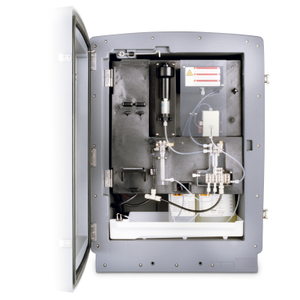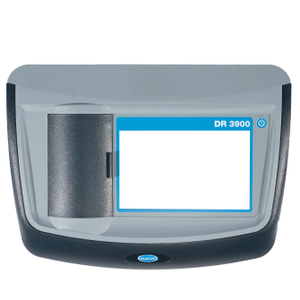
Measuring phosphate in wastewater effluents and source water is critical to maintaining a healthy ecosystem and protecting wildlife. High levels of phosphates can accelerate types of algae and plant growth. This in turn can lead to eutrophication and algae blooms. When this occurs, fish and aquatic life are robbed of oxygen.
Failing to sufficiently measure and monitor phosphate levels can have a variety of adverse outcomes including the following:
Hach® offers a variety of testing, measurement and monitoring solutions that are designed to keep you in compliance and give your operators the knowledge they need to make treatment decisions.
Are you facing the challenge of tight WINEP Phosphorus consents? Learn more about how Hach can help water companies meet Phosphorus consents as low as 0.1 mg/L within a tight budget.

Complete online solutions for your water analysis needs.

Benchtop instruments can provide fast, accurate phosphorus measurements when quick results are needed.

Easy to use, field testing equipment for your phosphorus needs.

Providing options for both digital and analog sensors and associated communication protocols.
Source water may contain elevated concentrations of phosphates due to agricultural runoff, which may cause eutrophication of surface water with algae growth and release of cyanotoxins. Condensed phosphates are often used for corrosion control in drinking water distribution systems, therefore drinking water treatment processes may require monitoring for phosphate in both raw and distributed finished water.

Orthophosphate (reactive phosphorus) is combined with molybdate in an acidic medium to produce either a blue or yellow color. Be aware that no analytical test is perfect and some condensed phosphates may be measured with these tests too. Due to the acidic chemistry, some suspended orthophosphate may be detected if the sample was not first filtered to 0.45 micron.
To measure all phosphorus including the particulate phosphates, it is necessary to use a total phosphorus test, which incorporates rigorous digestion to convert most of the particulate phosphate to dissolved format.
Benchtop/portable:
Online:
To measure condensed phosphates, it is first necessary to transform them into orthophosphate using sulfuric acid and heat, digesting the sample at 150°C for 30 minutes. This is called “acid hydrolyzable phosphate” since the condensed phosphates are hydrolyzed into orthophosphate. After the digestion, either the ascorbic acid or molybdovanadate methods are used to measure the orthophosphate. Some organic phosphate will be hydrolyzed into orthophosphate as well, so the results are not “pure” condensed phosphate.
Of course, just performing the digestion and colorimetric test will tell you the concentration of both the original orthophosphate and condensed phosphates. If you want just the condensed phosphate concentration, then simply run the orthophosphate test on the same sample without a digestion and subtract those results from the first concentration value.
Organic phosphates are stubborn compounds that do not like to break down easily. To test for them, it is necessary to not only digest the sample first with sulfuric acid and heat, but also add a strong oxidant such as potassium persulfate to break the orthophosphates free from the organic bonds. After digestion, the same ascorbic acid or molybdovanadate methods can be used to measure the phosphate concentration. The described test will convert all the different forms of phosphate into orthophosphate, which means the results are total phosphorus.
If you want to know only the organically bound phosphate concentration, it is necessary to perform the acid hydrolyzable test and subtract those results from the total phosphorus concentration (total phosphorus concentrations will always be larger than the orthophosphate concentration).
Benchtop:
Online:
Contact us for tech support, service, sales, or to get a quote.